My approach to using Needlefish (Part 2 of 2)
Posted by Marc Cowling (South Devon Bass Guide) on 4th Jun 2019
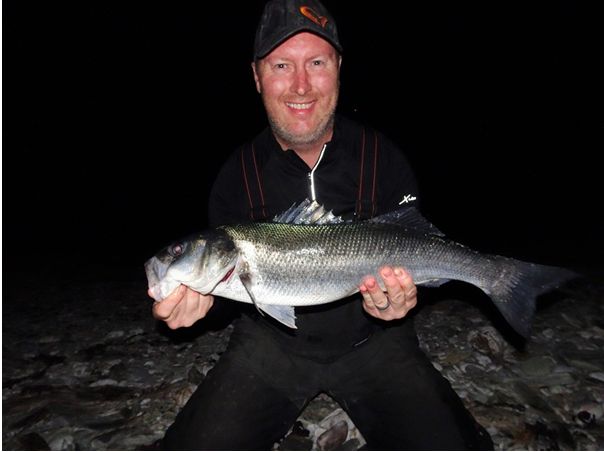
In Part 1 of this series I talked about the many attributes of the needlefish that I have been using (primarily the level sinking Jim’s Lures), in addition to how to cast and retrieve them to mimic prey items such as small fish in a comatose state or indeed, squid and cuttlefish. In Part 2, I will describe the type of ground (the seabed essentially) that I will look to routinely look to cover and fish over whilst conducting my guided and personal fishing sessions.
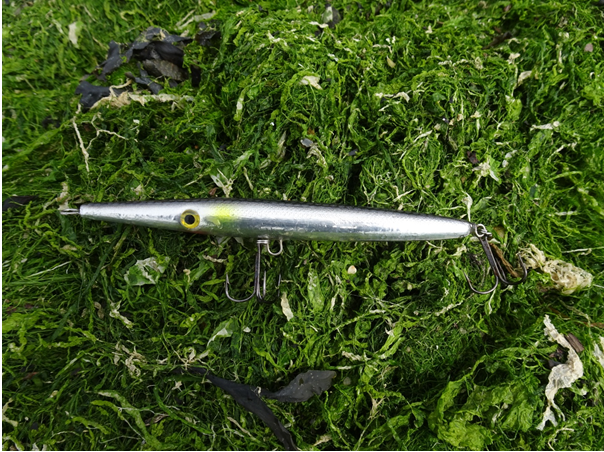
A Jim’s Lures level sinking needlefish.
What’s a reef?
It may or may not come as a surprise to you, but quite a few of my guided clients will ask me what a reef actually is on the way to the first mark of a session. Now I know what my own interpretation is but I ‘Googled’ it just in case, and the definition that appeared was “a ridge of jagged rock, coral, or sand just above or below the surface of the sea.” Not sure on the ‘sand’ part but most definitely, a reef in regards to my bass fishing is an area of rock with or without weed attached to it... Zones of ‘sand’ will be covered later in this post, but sticking with reefs for the time being, there is a specific type of reef, with certain characteristics that I will search for when considering whether a mark is suitable to fish with a needlefish, in darkness remember.
Features
So you’ve found an area of reef that is submerged either at low tide or at some stage as the tide floods and ebbs off of it, but what else should you look for? First and foremost, and very importantly, don’t be too concerned if the water covering the reef is 12” or 12ft. Furthermore, it really doesn’t matter to a marauding bass searching for a meal whether that body of water is being affected by calm or rougher seas. What I think is more important is find areas of reef that have ‘features’ set amongst them that the bass will utilise to either position in or patrol through to devastating effect (from the perspective of an immature fish, crab, prawn, squid or blenny anyhow!).
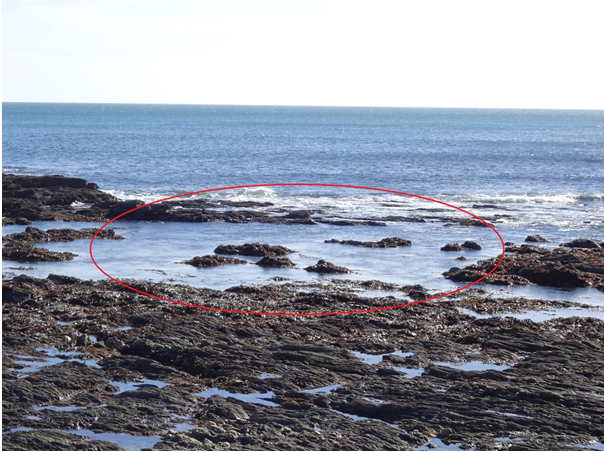
A very obvious deeper pool set within a flat reef system – the type of feature that bass will infiltrate and hold in once the water has covered the main area of reef.
In my book ‘The Lure of The Bass’ I describe in detail the movement and behaviour of bass, which in turn, will assist you to identify potential hot spots. Large rock pools, anywhere between 4-40m3 (length, width and depth) and in various shapes (round or elongated) set below the main plateau of rock/reef are excellent places that bass will either interrogate or just sit in (or both). Then there are those sections of reef that are crisscrossed almost by narrow gullies or culverts, maybe only 1m across and anything from 30cm to 3m deeper than, again, the surrounding formation - these, in conjunction with a gully that leads directly into a beach are the ‘roads under the sea’ that bass will utilise to traverse the reef itself.
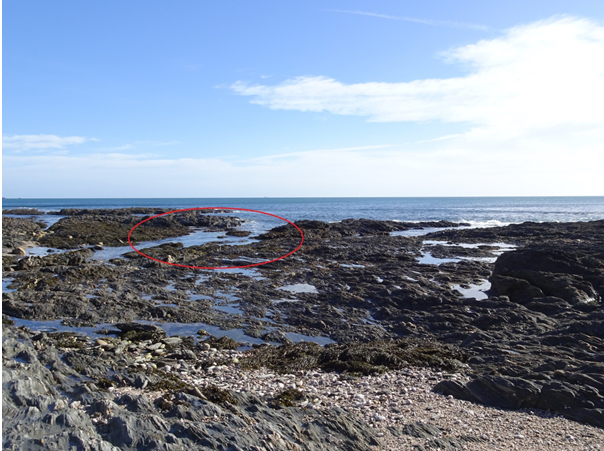
Note the gully (above) leading from the open sea and directly into the reef – this is the type of area I would target with a needlefish in darkness.
Less obvious, particularly on a flat and almost featureless (at first glance) expanse of reef, and one often swept by stronger currents (hence the lack of seaweed)is that if you look closely there will sometimes be clefts or ledges that bass, and the better ones too, will sit snugly within or under just waiting for an unsuspecting meal to pass by. Moreover, clumps of weed ranging from chair-size to bus-size set within a reef or even better, as standalone features set on an otherwise clean seabed can be superb areas to ghost that needlefish over and around - as bass will look to ambush their prey from such vantage points.
Highways
Outside of rocks, weed and the associated reef systems, over the past 12 months my clients and I have been catching a good number of bass when fishing from surf beaches and over a clean seabed whilst using needlefish. When I say ‘clean’ I mean sand or shingle, and when I say ‘surf’ I mean shallow beaches that are affected by the wind and swell to create lines of breaking waves.
I know some are keen, but standing waist deep in the surf at night as 10ft waves crash out in front of me isn’t my idea of fun! What I’m talking about here is literally standing at the water’s edge on a shingle beach that leads onto flat sand or, at worst, stood ankle deep as a soft surf, created by a tiny 1-2ft swell gently rolls up to our knees. Very interestingly, those brighter nights, when the stars sparkle above you, or more surprisingly perhaps, when the Moon is present have seen more consistent catches in the 18” - 4ft (max) of water covering these types of venues.
I believe that bass are using these types of sandy beaches as highways or shortcuts around the coastline, something that is continually highlighted by the fact that if you catch more than one bass in a session in this scenario practically all of the hits from the fish are received the same range. This behaviour suggests that the bass could be navigating along predetermined routes over pure sand, but two other zones where a good number of bass are also hooked from beaches is where the shingle bank meets the sand and levels out (the trough) plus where any flat rocks present also give way to the sand.
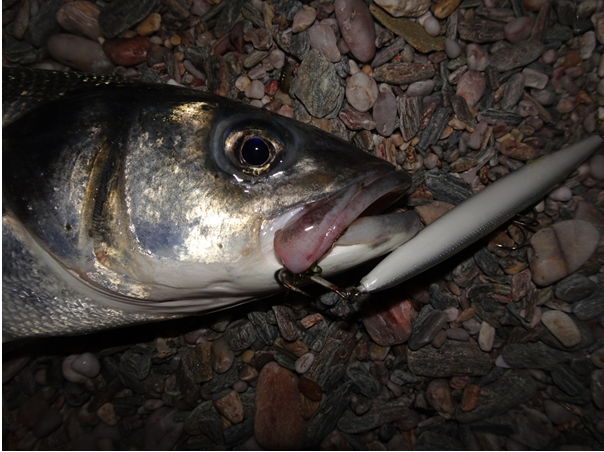
Marc Cowling is a highly respected bass fishing guide who specialises in catching and teaching his clients to catch this sublime sporting species on lures from the shore.
